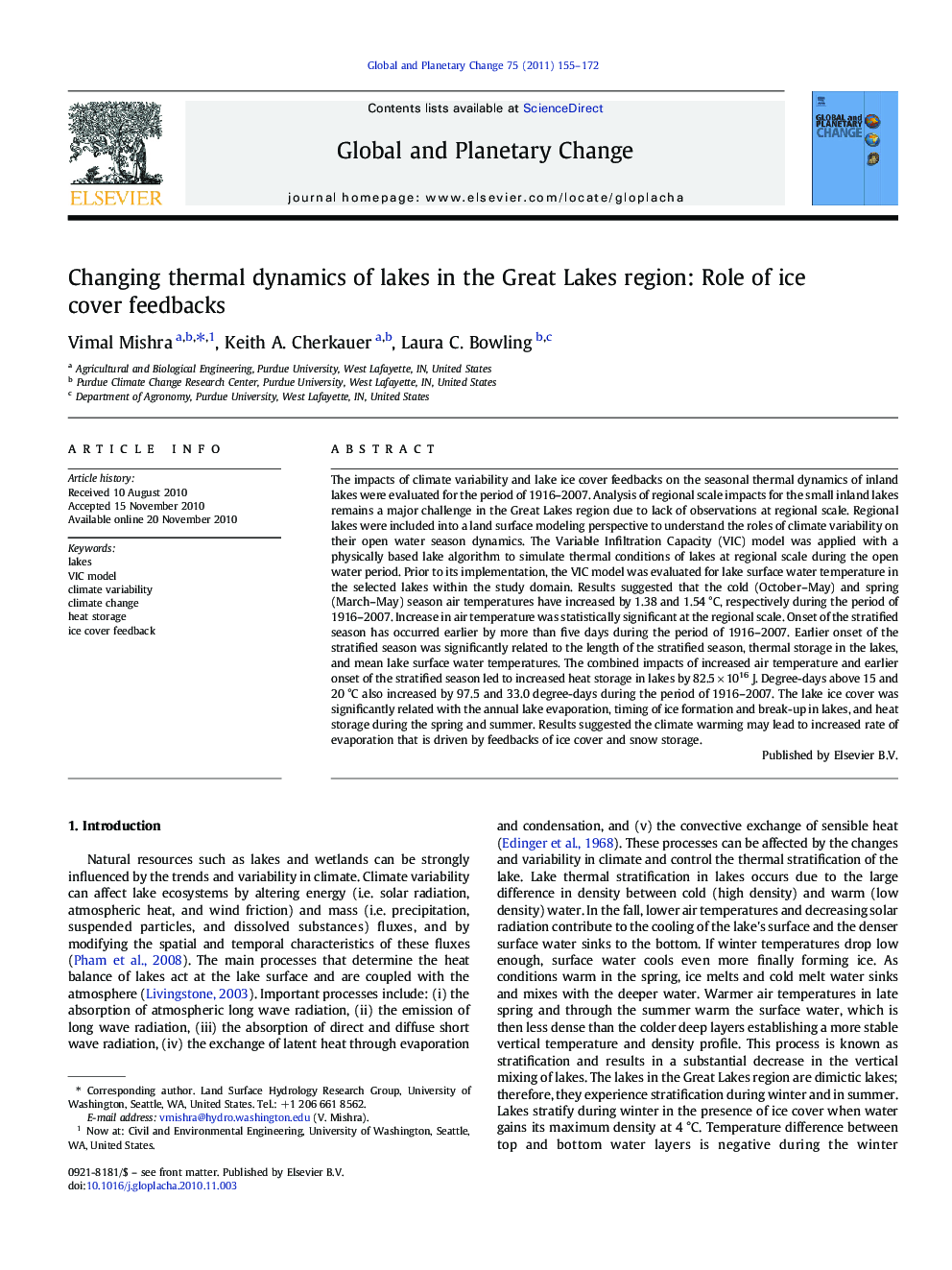| کد مقاله | کد نشریه | سال انتشار | مقاله انگلیسی | نسخه تمام متن |
|---|---|---|---|---|
| 4463864 | 1621700 | 2011 | 18 صفحه PDF | دانلود رایگان |

The impacts of climate variability and lake ice cover feedbacks on the seasonal thermal dynamics of inland lakes were evaluated for the period of 1916–2007. Analysis of regional scale impacts for the small inland lakes remains a major challenge in the Great Lakes region due to lack of observations at regional scale. Regional lakes were included into a land surface modeling perspective to understand the roles of climate variability on their open water season dynamics. The Variable Infiltration Capacity (VIC) model was applied with a physically based lake algorithm to simulate thermal conditions of lakes at regional scale during the open water period. Prior to its implementation, the VIC model was evaluated for lake surface water temperature in the selected lakes within the study domain. Results suggested that the cold (October–May) and spring (March–May) season air temperatures have increased by 1.38 and 1.54 °C, respectively during the period of 1916–2007. Increase in air temperature was statistically significant at the regional scale. Onset of the stratified season has occurred earlier by more than five days during the period of 1916–2007. Earlier onset of the stratified season was significantly related to the length of the stratified season, thermal storage in the lakes, and mean lake surface water temperatures. The combined impacts of increased air temperature and earlier onset of the stratified season led to increased heat storage in lakes by 82.5 × 1016 J. Degree-days above 15 and 20 °C also increased by 97.5 and 33.0 degree-days during the period of 1916–2007. The lake ice cover was significantly related with the annual lake evaporation, timing of ice formation and break-up in lakes, and heat storage during the spring and summer. Results suggested the climate warming may lead to increased rate of evaporation that is driven by feedbacks of ice cover and snow storage.
Journal: Global and Planetary Change - Volume 75, Issues 3–4, February 2011, Pages 155–172